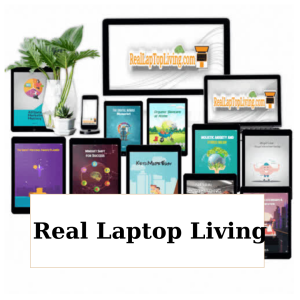In recent years, the world has witnessed a significant shift towards sustainable living as individuals and communities increasingly recognize the importance of minimizing their environmental impact. This green revolution encompasses various aspects of daily life, from energy consumption and waste reduction to conscious consumer choices. In this article, we will explore the key elements of sustainable living and the positive impact they can have on our planet.
Renewable Energy: Powering the Future Responsibly
One of the cornerstones of sustainable living is the adoption of renewable energy sources. Solar, wind, and hydroelectric power are gaining prominence as viable alternatives to traditional fossil fuels. The decreasing costs of solar panels and the development of advanced wind turbine technology make these eco-friendly options more accessible than ever. Embracing renewable energy not only reduces carbon footprints but also contributes to a more resilient and sustainable energy infrastructure.
Minimalism: Less is More in Sustainable Living
The concept of minimalism is gaining traction as people seek to declutter their lives and reduce their environmental impact. Minimalism encourages intentional living, emphasizing quality over quantity and mindful consumption. By embracing a minimalist lifestyle, individuals can not only simplify their surroundings but also reduce waste and promote sustainable practices. From capsule wardrobes to tiny houses, minimalism is reshaping the way we approach possessions and the impact they have on the environment.
Zero Waste Living: A Commitment to Sustainable Consumption
The zero-waste movement is gaining momentum as individuals strive to reduce their contribution to landfills and embrace a more sustainable approach to consumption. This involves minimizing single-use plastics, composting organic waste, and making conscious choices to support businesses that prioritize environmentally friendly packaging. Zero waste living is not just a personal choice; it’s a commitment to a circular economy where resources are used efficiently, and waste is minimized at every stage of the production and consumption cycle.
Eco-Friendly Transportation: Reducing Carbon Footprints on the Move
The transportation sector is a significant contributor to carbon emissions, making eco-friendly alternatives crucial for sustainable living. Electric vehicles (EVs), public transportation, cycling, and walking are becoming popular choices for individuals looking to reduce their carbon footprint. Governments and businesses are also investing in sustainable transportation infrastructure, such as electric charging stations and bike-sharing programs, to encourage the widespread adoption of green commuting.
Sustainable Agriculture: Nurturing the Earth for Future Generations
As the global population continues to grow, sustainable agriculture becomes paramount in ensuring food security without compromising the health of the planet. Practices such as organic farming, agroforestry, and regenerative agriculture prioritize soil health, biodiversity, and water conservation. By supporting sustainable farming methods and choosing locally sourced, seasonal produce, consumers contribute to a food system that is both environmentally friendly and socially responsible.
Conclusion: Shaping a Greener Tomorrow through Sustainable Living
The rise of sustainable living is a positive and necessary response to the environmental challenges facing our planet. By embracing renewable energy, minimalism, zero waste living, eco-friendly transportation, and sustainable agriculture, individuals can make a meaningful impact on the health of the Earth. As this green revolution continues to gain momentum, it is clear that the choices we make today will shape a greener and more sustainable tomorrow for generations to come.
The Role of Technology: Innovations Driving Sustainable Solutions
In the quest for a more sustainable future, technology plays a pivotal role in driving innovations that address environmental challenges. From smart energy management systems that optimize power consumption to blockchain applications ensuring transparency in supply chains, technological advancements contribute significantly to sustainable living. The integration of artificial intelligence in resource management, waste reduction, and environmental monitoring further enhances our ability to make informed, eco-conscious decisions.
Educational Initiatives: Empowering Change through Knowledge
An essential aspect of the sustainable living movement involves educating individuals about the environmental impact of their choices. Educational initiatives, ranging from school programs to online courses, empower people with the knowledge needed to make informed decisions. Understanding the consequences of consumption patterns, energy usage, and waste generation fosters a sense of responsibility and encourages a collective commitment to sustainable living practices.
Community Engagement: Fostering a Culture of Sustainability
Sustainable living is not just an individual endeavor; it thrives on community engagement and collaboration. Local communities are increasingly coming together to share resources, implement eco-friendly initiatives, and support sustainable businesses. Community gardens, recycling programs, and neighborhood clean-up efforts contribute to a shared commitment to environmental stewardship. By fostering a culture of sustainability, communities become catalysts for positive change, inspiring others to join the movement.
Government Policies: Catalysts for Systemic Change
Government policies play a crucial role in shaping the trajectory of sustainable living on a larger scale. From incentives for renewable energy adoption to regulations promoting eco-friendly practices in industries, governments can be catalysts for systemic change. By setting emission reduction targets, encouraging sustainable urban planning, and investing in green infrastructure, policymakers create an environment conducive to widespread adoption of sustainable practices.
Challenges and Opportunities: Navigating the Path to Sustainability
While the momentum for sustainable living is undeniable, challenges persist on the path to a greener future. Overcoming issues such as economic barriers to renewable energy adoption, resistance to change, and the need for widespread policy reforms requires concerted effort. However, these challenges also present opportunities for innovation, collaboration, and the development of new solutions that can accelerate the transition to a more sustainable world.
The Future of Sustainable Living: A Collective Responsibility
In conclusion, the future of sustainable living rests on our collective shoulders. By integrating technology, promoting education, engaging communities, and enacting supportive policies, we can navigate the challenges and seize the opportunities that lie ahead. Sustainable living is not just a trend; it’s a fundamental shift in mindset and behavior that holds the key to a harmonious coexistence with our planet. As individuals, communities, and nations unite in this endeavor, we pave the way for a future where environmental stewardship is a shared responsibility, and the legacy we leave for future generations is one of sustainability and resilience.
Global Collaboration: Uniting Nations for Environmental Conservation
As the challenges of climate change and environmental degradation transcend national borders, global collaboration becomes imperative. International cooperation on issues such as carbon emissions, deforestation, and marine conservation is crucial for addressing the root causes of environmental decline. Agreements like the Paris Agreement exemplify the commitment of nations to work together to mitigate the impacts of climate change and transition to a more sustainable future. Through shared knowledge, resources, and a commitment to collective responsibility, the global community can amplify the impact of sustainable living efforts.
Innovation in Packaging: Reducing Environmental Footprints
A significant contributor to environmental waste is the excessive use of non-biodegradable packaging materials. However, innovative solutions are emerging to address this issue. From plant-based plastics to reusable packaging, businesses are reimagining their approach to product packaging. Additionally, consumer awareness campaigns are encouraging individuals to choose products with minimal packaging or those utilizing eco-friendly materials. The evolution of packaging practices represents a tangible and impactful way in which industries and consumers can collectively reduce their environmental footprints.
Advocacy and Activism: Amplifying the Voice of Sustainability
Advocacy and activism play a vital role in shaping public opinion and influencing policies that support sustainable living. Environmental activists and organizations work tirelessly to raise awareness about the urgency of adopting eco-friendly practices and holding industries accountable for their ecological impact. Social media platforms provide a powerful tool for amplifying these messages and mobilizing communities for collective action. By actively participating in advocacy efforts, individuals contribute to the momentum of the sustainable living movement and encourage positive change on a broader scale.
Measuring Impact: The Importance of Sustainable Metrics
To assess the effectiveness of sustainable living practices, it is essential to establish and monitor key metrics. From carbon footprint calculations to waste reduction measurements, quantifiable data provides insights into the real impact of individual and collective efforts. Businesses are increasingly adopting sustainability reporting to transparently communicate their environmental performance. These metrics not only hold individuals and organizations accountable but also contribute to a culture of continuous improvement, where successes are celebrated, and areas for growth are identified.
Conclusion: A Holistic Approach to a Sustainable Future
In the journey towards a sustainable future, it is evident that a holistic approach is necessary. From individual lifestyle choices to global collaborations, each facet contributes to the collective goal of environmental conservation. By embracing sustainable living, fostering innovation, advocating for change, and measuring our impact, we can navigate the complexities of our interconnected world and create a legacy of responsible stewardship for the generations to come. The path to sustainability is dynamic, requiring adaptability, commitment, and a shared vision for a planet that thrives in harmony with its inhabitants.
Educational Integration: Embedding Sustainability in Curricula
To ensure the longevity of the sustainable living movement, integrating environmental education into formal curricula is essential. Educational institutions play a pivotal role in shaping the values and behaviors of future generations. By incorporating sustainability principles into various subjects, students gain a comprehensive understanding of ecological systems, climate change, and the importance of conservation. This approach not only instills a sense of responsibility but also equips individuals with the knowledge and skills needed to make informed, sustainable choices in their personal and professional lives.
Technological Accessibility: Bridging the Green Divide
As technology advances, ensuring its accessibility to all socio-economic strata becomes crucial for an inclusive sustainable living movement. Initiatives that provide affordable access to eco-friendly technologies, such as energy-efficient appliances and water-saving devices, bridge the gap between economic disparity and environmental consciousness. By making sustainable technologies accessible to a broader audience, we empower communities globally to participate in the green revolution, fostering a more equitable and sustainable world.
Circular Economy: Redefining Consumption and Production
The concept of a circular economy promotes a regenerative approach to resource use, emphasizing the reduction, reuse, and recycling of materials. Industries are increasingly adopting circular economy principles, redesigning products for longevity and ease of recycling. Consumers, in turn, are encouraged to support products with minimal environmental impact, contributing to the creation of a closed-loop system. Embracing a circular economy not only minimizes waste but also reduces the strain on finite resources, creating a more sustainable and resilient global economy.
Green Finance: Investing in a Sustainable Future
The financial sector plays a pivotal role in steering the direction of sustainable living. Green finance initiatives involve investments in environmentally friendly projects and businesses that prioritize sustainability. This includes funding for renewable energy projects, sustainable agriculture, and eco-friendly infrastructure. As individuals and institutions redirect their investments towards environmentally conscious endeavors, they become instrumental in driving positive change and shaping a financial landscape that aligns with the principles of sustainability.
Crisis Preparedness: Building Resilience through Sustainability
Sustainable living is not only about mitigating current environmental issues but also about building resilience for the future. By adopting eco-friendly building practices, creating disaster-resistant infrastructure, and preserving natural ecosystems, communities can better withstand the impacts of climate change and other environmental challenges. Prioritizing sustainability in urban planning and disaster preparedness initiatives ensures that societies are equipped to face crises with minimal ecological and human impact.
Conclusion: A Collaborative Journey Towards Sustainable Living
In conclusion, the journey towards sustainable living is a collaborative effort that involves individuals, communities, businesses, governments, and educational institutions. By embracing a holistic approach that integrates sustainability into education, promotes technological accessibility, embraces circular economy principles, encourages green finance, and prioritizes crisis preparedness, we can collectively navigate the complexities of environmental stewardship. The vision for a sustainable future is dynamic, requiring continuous collaboration, innovation, and a shared commitment to creating a world where humanity coexists harmoniously with nature.
Social Innovation: Harnessing Creativity for Sustainable Solutions
Social innovation is a powerful force driving sustainable living, leveraging creativity to address social and environmental challenges. From community-led initiatives to grassroots movements, social innovation empowers individuals to develop solutions tailored to their specific contexts. By encouraging collaboration, inclusivity, and the exploration of novel ideas, social innovation acts as a catalyst for positive change. Through platforms that support social entrepreneurship and community-driven projects, individuals can actively contribute to sustainable development and inspire others to join the movement.
Cultural Shift: Redefining Values for a Sustainable Society
Creating a sustainable future involves a profound cultural shift in which societal values are redefined. This shift goes beyond individual actions and embraces a collective commitment to prioritize environmental well-being. Cultivating a culture that values conservation, environmental responsibility, and mindful consumption fosters a sense of shared responsibility. As communities adopt eco-friendly practices, sustainable living becomes ingrained in the fabric of society, influencing norms, traditions, and social expectations.
Nature-Based Solutions: Partnering with the Environment
Nature-based solutions harness the power of ecosystems to address environmental challenges. From reforestation projects that sequester carbon to urban green spaces that mitigate heat islands, these solutions recognize the intrinsic connection between human well-being and the health of the natural world. By actively partnering with the environment, societies can restore ecosystems, enhance biodiversity, and create resilient landscapes that benefit both people and the planet. This approach exemplifies the potential for harmonious coexistence between human activities and the natural world.
Youth Engagement: Empowering the Leaders of Tomorrow
Engaging the youth in sustainable living initiatives is essential for shaping a future where environmental consciousness is ingrained from an early age. Youth-led movements, environmental education programs, and platforms that amplify young voices in decision-making processes empower the leaders of tomorrow. By fostering a sense of environmental responsibility among the younger generation, we ensure a sustained commitment to sustainable living practices and the continued evolution of innovative solutions for the challenges that lie ahead.
Mindfulness and Well-being: Balancing Human Flourishing with Environmental Respect
Sustainable living is not just about the planet; it’s also about personal well-being. Mindfulness practices that encourage individuals to connect with nature, adopt eco-conscious lifestyles, and prioritize mental health contribute to a holistic approach to sustainability. Balancing human flourishing with environmental respect involves recognizing the interdependence between individual wellness and the health of the planet. By prioritizing practices that nurture both, societies can create a harmonious equilibrium that benefits people and the environment.
Celebrating Successes: Inspiring Momentum for Change
Amidst the challenges of transitioning to sustainable living, celebrating successes, both big and small, is crucial. Recognizing and highlighting positive outcomes inspire individuals and communities to continue their efforts. Whether it’s the achievement of renewable energy milestones, the success of conservation projects, or the adoption of sustainable practices by businesses, each success story contributes to a narrative of progress. By acknowledging and celebrating these successes, we cultivate a sense of optimism and momentum that propels the sustainable living movement forward.
Conclusion: A Collective Tapestry of Sustainable Living
In conclusion, sustainable living is a complex and multifaceted endeavor that requires the active participation of diverse stakeholders. From social innovation and cultural shifts to nature-based solutions, youth engagement, mindfulness, and celebrating successes, the collective tapestry of sustainable living is woven with a rich diversity of approaches. As individuals, communities, and societies continue to explore and embrace these facets, the vision of a sustainable future becomes not only achievable but also transformative. The journey towards sustainable living is an evolving process, and by weaving together these varied threads, we create a resilient and vibrant tapestry that shapes a better world for present and future generations.











